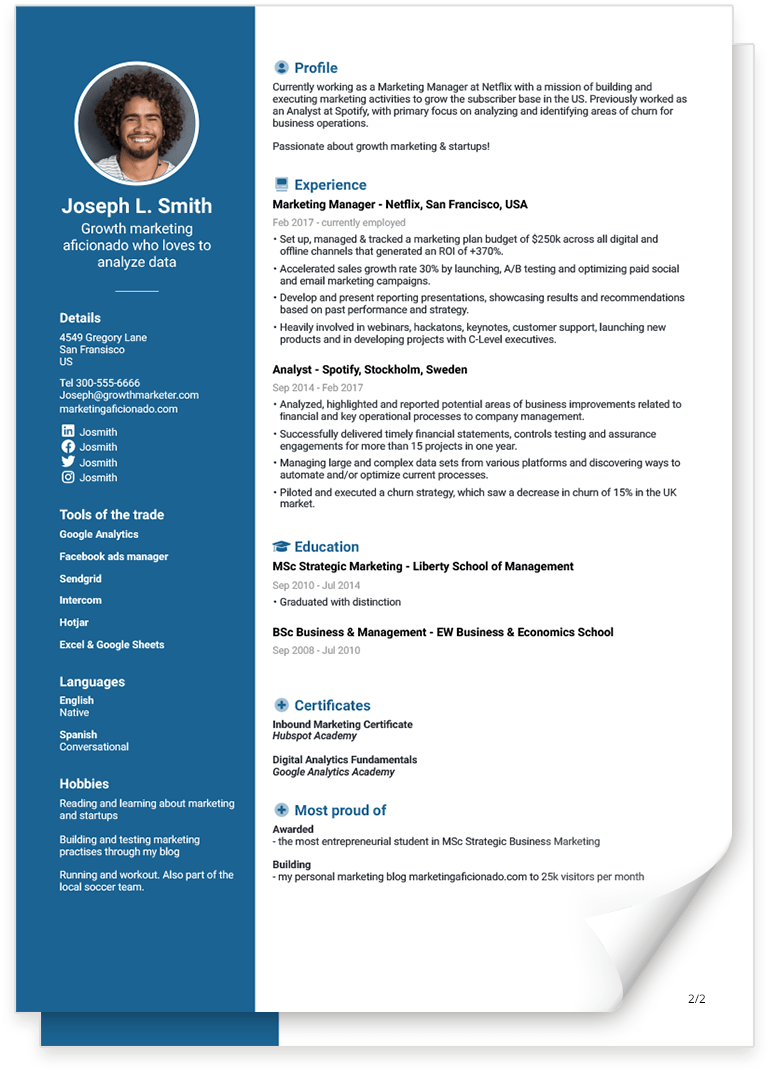10 Mistakes You Should Never Make in Your Cover Letter (And What to Do Instead)

A great cover letter can open the door to your dream job. A weak one gets ignored in seconds.
Unfortunately, we see far too many applicants making the same avoidable mistakes. In this article, you’ll learn the 10 most common cover letter mistakes and how to fix them so your application rises to the top of the pile.
1. You write “To whom it may concern”
Use the hiring manager’s name instead
A cover letter is a personal message. Writing “To Whom It May Concern” signals that you didn’t put in the effort to find the right recipient. It comes across as impersonal and almost like a mass email.
Do this instead: Look for the hiring manager’s name in the job posting. If it’s missing, call the company to ask. This shows initiative and interest and gives you a chance to ask a few questions you can use in your cover letter.
2. You send the same cover letter to every job
Always tailor your letter to the specific role
A generic cover letter is obvious right away. It lacks the small details that show you’ve read and understood the job description.
Do this instead: Highlight the exact skills and experiences the company is asking for, and mirror some of the language from the posting. This increases the chances that your cover letter aligns with what the recruiter - and their applicant tracking system - are looking for.
3. You start with “I am writing to apply for the position…”
Hook the reader with a strong opening
Recruiters read dozens of cover letters. You need to catch their attention from the very first line. A dry, generic introduction will land you at the bottom of the stack.
Do this instead: Start with a value statement, a brief story, or a concrete achievement. For example:
“As a project manager at X, I doubled client satisfaction within two years. An achievement I’m eager to bring to strengthen your customer service team.”
4. You repeat your resume word-for-word
Instead, expand on your experience and show how you work
An effective cover letter provides context. Don’t just copy your resume - use the space to explain how you work and why it makes a difference.
Do this instead: Pick one or two experiences from your resume and expand on them using the STAR method: Situation, Task, Action, Result. Show the impact you made.
5. You focus too much on yourself and not enough on the company
Show how you can create value for them
Your cover letter should explain what the company gains by hiring you. Flip the perspective and highlight how your skills and experience will solve their problems.
Do this instead: Step into the company’s shoes and explain how your strengths meet their needs. Use specific examples tied to their challenges instead of vague claims about your qualities.
6. Your cover letter is too long
Keep it to one page - max
A strong cover letter is sharp, concise, and easy to skim. Most recruiters spend less than a minute reviewing it - so get to the point quickly.
Do this instead: Cut out anything that doesn’t directly support your case. Use short paragraphs, bullet points, and active language to make your letter easy to read.
7. You rely on clichés like “team player” or “highly organized”
Show it with real examples
Buzzwords without evidence are meaningless. Use short anecdotes and concrete results to back up your claims. The STAR method is again a great tool here.
Do this instead: Share a situation where your teamwork or organizational skills made a difference. For example:
“As coordinator of the X project, I brought together a cross-departmental team that delivered the project two weeks ahead of schedule.”
8. You end weakly or apologetically
Close with confidence and an invitation to interview
Wrap up with a brief summary of your strengths and make it clear that you look forward to an interview. Avoid weak phrases like “I hope to hear from you.”
Do this instead: Summarize confidently and extend an invitation:
“I look forward to discussing how my five years of process optimization experience can contribute to your continued growth.”
9. You don’t proofread before sending
Always review - and ideally have someone else review too
Typos and grammar mistakes make you look careless, even if you’re not. They can undermine an otherwise strong cover letter.
Do this instead: Read your letter multiple times, with breaks in between. Use spell check, but don’t rely on it completely. Ask a friend or colleague to review it—fresh eyes often catch what you miss.
“You should never submit a cover letter or resume with spelling errors. It shows you didn’t take the time, and you’re already at a disadvantage.”
– Michael Jul Jensen, Senior Recruitment Partner at Everllence
See more recruiter tips for an effective job search.
10. Your cover letter looks messy and doesn’t match your resume
Aim for a professional, consistent layout
Design matters more than you think. If your cover letter looks sloppy or unprofessional, it may not even get read. Instead of a plain Word document, consider using a professional cover letter template.
With our cover letter templates, you’ll get a polished, well-structured look - without needing design skills.
Do this instead: Use consistent formatting, fonts, and colors in both your resume and cover letter. A professional template makes everything streamlined and easy to read.
Conclusion: you don’t need to write perfectly but you do need to write with purpose
Writing a strong cover letter isn’t about perfection. It’s about showing why you’re the right fit for this specific role. By avoiding the 10 mistakes above, you’ll already be ahead of most candidates.
Create a professional cover letter in less than 15 minutes
With Jofibo’s templates, you’ll get support with structure, content, and design and can match your cover letter to your resume in just a few clicks.
Need a matching resume too? Check out our resume templates here
![The CV Format Recruiters Hate [examples]](https://jofibostorage.blob.core.windows.net/blog/the-cv-resume-format-recruiters-hate_top.jpg)

![How to Write a Professional Resignation Letter [With Samples]](https://jofibostorage.blob.core.windows.net/blog/how-to-write-a-professional-resignation-letter-header.png)
